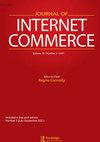感知质量和感知风险在消费者“先试后买”模式接受意愿中的不对称作用
IF 4.1
Q2 BUSINESS
引用次数: 1
摘要
摘要鼓励消费者采用新的购物模式对零售商来说总是一项挑战。随着零售业的激烈竞争,零售商的目标是积极接触更多的消费者,尤其是在互联网上。“先试后买”(TBYB)电子商务购物模式最近出现并迅速发展。本研究考察了消费者接受TBYB模式的前因。我们发现,根据消费者的偏好进行定制——即实施定制策略——有利于提高消费者对TBYB模型的感知质量,然而,这也增加了他们对该模型的感知风险。此外,提供灵活的远期交易流程比远期交易灵活性更重要,因为尽管两者都提高了消费者的感知质量,但只有远期交易灵活性降低了消费者对TBYB模型的感知风险。此外,我们发现,虽然感知质量有助于消费者接受TBYB模型,但更高的感知风险并不是预防因素。这揭示了消费者感知质量和感知风险在产生他们的TBYB模型接受意向中的不对称作用。我们的研究有助于零售商实施相应的改进政策和设计,以更好地优化TBYB模式的运营。本文章由计算机程序翻译,如有差异,请以英文原文为准。
The Asymmetric Role of Perceived Quality and Perceived Risk in Consumers’ Try-Before-You-Buy Model Acceptance Intention
Abstract Encouraging consumers to adopt a new shopping model is always challenging for a retailer. With the fierce competition in the retail industry, retailers aim to actively reach more consumers, especially on the internet. The Try-Before-You-Buy (TBYB) e-commerce shopping model has been emerging and rapidly developing recently. This study examines the antecedents of consumers’ acceptance of the TBYB model. We find that tailoring to consumers’ preferences—namely, implementing a customization strategy—is beneficial to enhance consumers’ perceived quality of the TBYB model, however, it also increases their perceived risk of the model. Additionally, offering a flexible forward transaction process is more important than the backward transaction flexibility because while both increase consumers’ perceived quality, only the forward transaction flexibility reduces consumers’ perceived risk of the TBYB model. Further, we find while the perceived quality is a facilitator for consumers to have the intention to accept the TBYB model, higher perceived risk is not a preventer. This reveals the asymmetric role of consumers’ perceived quality and perceived risk in generating their TBYB model acceptance intention. Our study helps retailers to implement the corresponding improvement policies and designs to better optimize the operations of the TBYB model.
求助全文
通过发布文献求助,成功后即可免费获取论文全文。
去求助
来源期刊

Journal of Internet Commerce
BUSINESS-
CiteScore
10.50
自引率
7.00%
发文量
18
期刊介绍:
The business world has undergone many changes because of information technology, and the impact of the Internet may cause one of the biggest yet. While many people use the Internet for educational and entertainment purposes, organizations and companies are looking for ways to tie their internal networks to this global network to conduct electronic commerce. While companies have been conducting business electronically with suppliers and customers for many years, conducting online commerce via the Internet offers even greater opportunities for multinational, national, and even small businesses to cut costs, improve efficiency, and reach a global market.
 求助内容:
求助内容: 应助结果提醒方式:
应助结果提醒方式:


